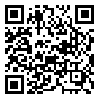Volume 4, Issue 1 (March 2019)
J Environ Health Sustain Dev 2019, 4(1): 717-726 |
Back to browse issues page
Raziyeh Pourjamali 

 , Elham Khalili Sadrabad
, Elham Khalili Sadrabad 

 , Sayed Aliasghar Hashemi
, Sayed Aliasghar Hashemi 

 , Hosein Shekofteh
, Hosein Shekofteh 

 , Mehdi Mokhtari
, Mehdi Mokhtari 

 , Ali Heydari
, Ali Heydari 

 , Fateme Akrami Mohajeri *
, Fateme Akrami Mohajeri * 




 , Elham Khalili Sadrabad
, Elham Khalili Sadrabad 

 , Sayed Aliasghar Hashemi
, Sayed Aliasghar Hashemi 

 , Hosein Shekofteh
, Hosein Shekofteh 

 , Mehdi Mokhtari
, Mehdi Mokhtari 

 , Ali Heydari
, Ali Heydari 

 , Fateme Akrami Mohajeri *
, Fateme Akrami Mohajeri * 


Zoonotic Diseases Research Center, School of Public Health, Shahid Sadoughi University of Medical Sciences, Yazd, Iran.
Abstract: (2519 Views)
Introduction: Nowadays, many people have bought and installed home water treatment devices (point-of-use drinking water treatment systems), as an essential measure, to improve their health.
Materials and Methods: This cross-sectional study was conducted to evaluate the parameters of drinking water of Rafsanjan city and home water treatment device in summer 2017. Water samples at the inlet and outlet of the device with 15 day intervals for three months (approximately 48 samples, summer) were collected. Then, the concentration of heavy metals, total hardness, EC, sodium and nitrate were measured in inlet and outlet of treatment devices. All data were statistically analyzed by SPSS software version 18.
Results: The results showed that in the inlet water, the EC and pH values were in the standard ranges. The concentrations of arsenic was higher than the permissible limits and other parameters including total hardness, calcium, sodium, magnesium, nitrate, copper, zinc and lead were lower than the standard limits. The highest reduction efficiency was obtained for copper, zinc and arsenic respectively, and the lowest reduction efficiency was reported for nitrate and calcium.
Conclusion: Therefore, it can be concluded the devices could reduce the concentrations of the parameters under the standard limits. Due to the relationship between heart disease and light water, it is suggested that, in view of the high arsenic content in Rafsanjan water, filters at the inlet municipal water can be used to absorb heavy metals, especially arsenic.
Materials and Methods: This cross-sectional study was conducted to evaluate the parameters of drinking water of Rafsanjan city and home water treatment device in summer 2017. Water samples at the inlet and outlet of the device with 15 day intervals for three months (approximately 48 samples, summer) were collected. Then, the concentration of heavy metals, total hardness, EC, sodium and nitrate were measured in inlet and outlet of treatment devices. All data were statistically analyzed by SPSS software version 18.
Results: The results showed that in the inlet water, the EC and pH values were in the standard ranges. The concentrations of arsenic was higher than the permissible limits and other parameters including total hardness, calcium, sodium, magnesium, nitrate, copper, zinc and lead were lower than the standard limits. The highest reduction efficiency was obtained for copper, zinc and arsenic respectively, and the lowest reduction efficiency was reported for nitrate and calcium.
Conclusion: Therefore, it can be concluded the devices could reduce the concentrations of the parameters under the standard limits. Due to the relationship between heart disease and light water, it is suggested that, in view of the high arsenic content in Rafsanjan water, filters at the inlet municipal water can be used to absorb heavy metals, especially arsenic.
Keywords: Drinking Water, Water Purification, Physicochemical parameters, Heavy Metals, Rafsanjan City.
Type of Study: Original articles |
Subject:
Special
Received: 2018/11/15 | Accepted: 2019/01/20 | Published: 2019/03/10
Received: 2018/11/15 | Accepted: 2019/01/20 | Published: 2019/03/10
| Rights and permissions | |
 |
This work is licensed under a Creative Commons Attribution-NonCommercial 4.0 International License. |


